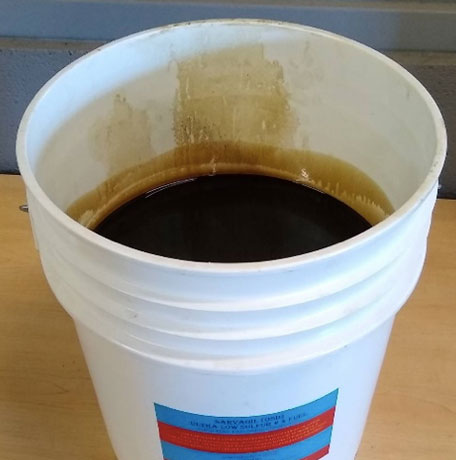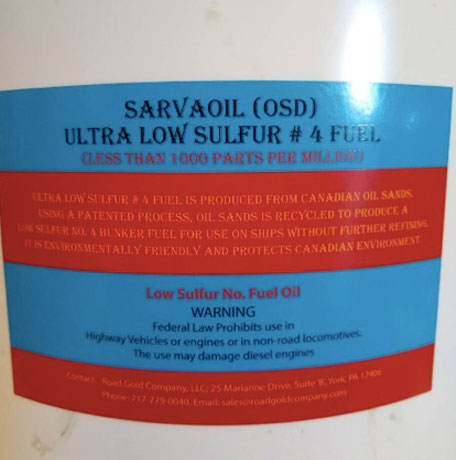The No. 4 fuel oil produced from the waste asphalt or oil sands is an oil different from the parent source namely asphalt. The oil is not crude oil nor is it liquid bitumen. It may be closer to oil produced by Deasphaltesd Fuel Oil ready for use without any additional refining.
According to Ayhan Demirbaş (2015), No. 4 fuel oils are used as burner fuel for domestic and industrial heating and have to raise steam for power generation and marine propulsion. The purpose of their study was to obtain light products, especially gasoline and No. 2 diesel fuel from No. 4 fuel oil by the method of pyrolytic distillation. The present low sulfur No. 4 fuel oil can be used as-is for power generation or marine propulsion or they can be used for producing lighter fractions of hydrocarbons.
We have classified the oil as SarvaOil.
All three sources of asphalt have produced fuel oil. These are Waste asphalt, Waste Asphalt roof Shingles, and Oil sands. It is recorded that all three sources produced Low Sulfur No. 4 Fuel oil. However, there may be generic differences within each type of feedstock. Hence each of these oil has been classified based on their source. This differentiation is also expected to help in reporting carbon footprints.
SarvaOil (ASP)
The fuel oil produced from the waste asphalt is generated after laying new roads, repair, and maintenance of highways, driveways, and airport runways. The oil produced is low sulfur fuel oil of the composition Total sulfur 1828 ppm, Flashpoint 76°C, and kinematic viscosity 7.18 CST.

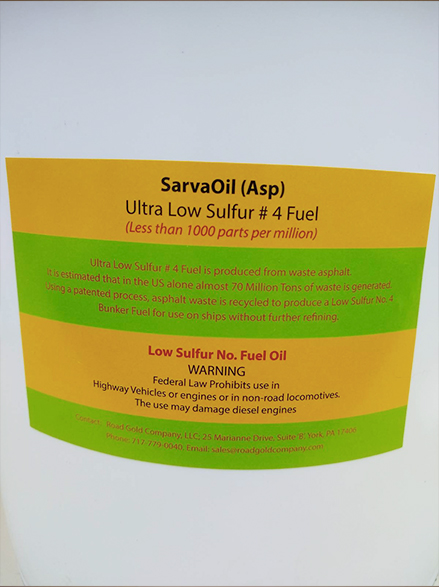
SarvaOil (SHI)
Used shingles are a very rich source of oil. The fiberglass base is able to support higher volumes of asphalt layer than wood and is light. The amount of oil produced is also much higher. The analysis showed Total Sulfur 331 ppm, Flashpoint 70°C, and Kinematic viscosity 2.8 Centistokes. The fuel could be classified as Ultra Low Sulfur No. 4 Fuel oil.
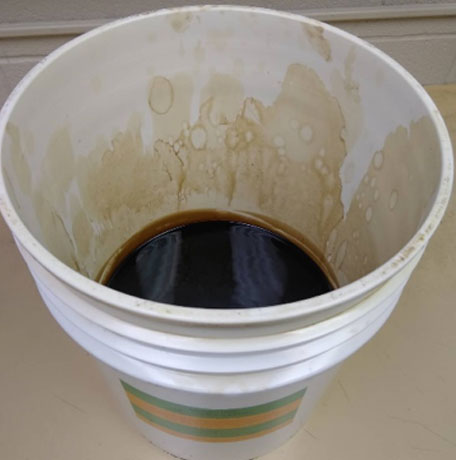
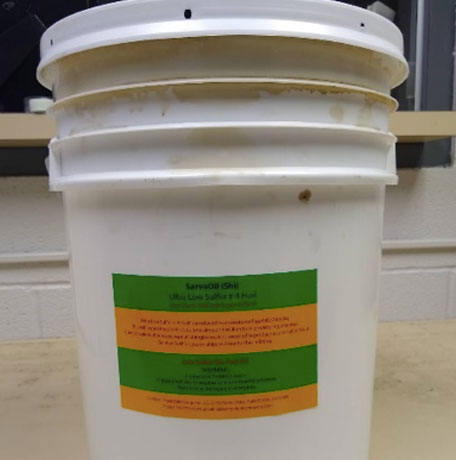
SarvaOil (OSD)
Oil sands are another rich source of fuel oil. In the current process, the oil collected from the sample of oil sands received from Canada was examined for the production of fuel oil. Ten pounds of oil sands produced 20 pounds of fuel oil. The oil was sent to a testing laboratory for analysis. Laboratory analysis of the fuel oil indicates a sulfur content of 1828 ppm, a flashpoint of 76°C and, the kinematic viscosity of 7.18 centistokes at 40°C. These values correspond to the properties of No. 4 Fuel Oil.
